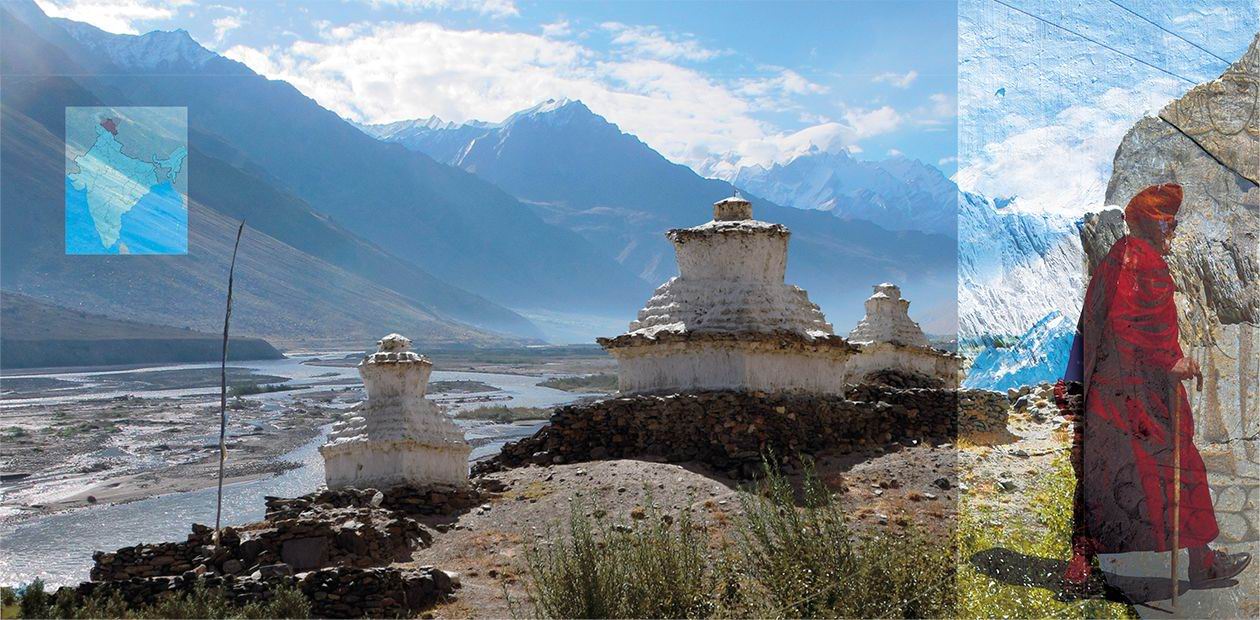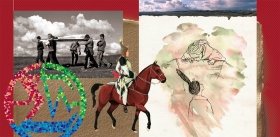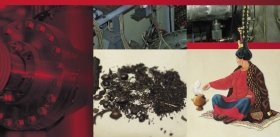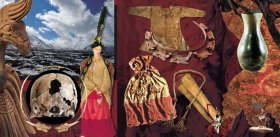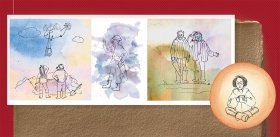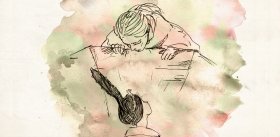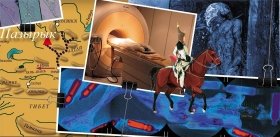A Trail That Leads to Zanskar
In 2016, a Russian–Indian archaeological expedition conducted archaeological research in Zanskar. At present, this area of North India is officially a subdistrict of Kargil, an Indian district with the predominantly Muslim population. In reality, however, it is part of the Buddhist province Ladakh, the far edge of the Tibetan world, in the Indian state of Jammu and Kashmir. The vastness and remoteness of many Zanskar lands together with their severe climate, which limits the time when field works are possible in this mountainous area, are major obstacles to archaeological research. Therefore, although Zanskar is now open to scientists, it is still an unchartered territory for archaeological research*
We do not know. But they know.
Stones know. Even trees know.
And they remember.
They remember who named mountains and rivers.
Who built past cities.
Who gave name to vanished countries.
Nicholas Roerich**
Visuals to the article by Ivan Osintsev, the cameraman of the Russian-Indian archaeological expedition
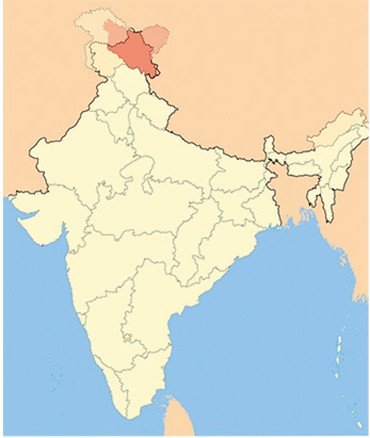 Our journey to Ladakh began a long time ago. The beginning dates back to the end of the last century, when in 1990 archaeologists discovered and studied the first unrobbed “frozen” burial of Pazyryk riders on the Ukok plateau (Polosmak, 1994). It was then, when analyzing the unique materials from the then southernmost highland “frozen” burials of the Pazyryk culture and speculating about its origins, we turned our eyes to Tibet, where an expedition led by Nicholas Roerich found, as early as in the 1930s, traces of the so-called animal style in the art of nomadic tribes. In the same year 1990, French archaeologists who studied petroglyphs of Ladakh and Zanskar to find common features between the animalistic rock images in this part of Tibet and those of the Pazyryk culture wrote that excavations of ancient tombs in Ladakh and Zanskar would necessarily lead to the discovery of “new Pazyryks”, by which they meant not only cultural affinity but also the unique preservation of the alleged burial complexes (Francfort et al., 1990). More than a quarter-century has passed since then, but the discovery has not yet happened.
Our journey to Ladakh began a long time ago. The beginning dates back to the end of the last century, when in 1990 archaeologists discovered and studied the first unrobbed “frozen” burial of Pazyryk riders on the Ukok plateau (Polosmak, 1994). It was then, when analyzing the unique materials from the then southernmost highland “frozen” burials of the Pazyryk culture and speculating about its origins, we turned our eyes to Tibet, where an expedition led by Nicholas Roerich found, as early as in the 1930s, traces of the so-called animal style in the art of nomadic tribes. In the same year 1990, French archaeologists who studied petroglyphs of Ladakh and Zanskar to find common features between the animalistic rock images in this part of Tibet and those of the Pazyryk culture wrote that excavations of ancient tombs in Ladakh and Zanskar would necessarily lead to the discovery of “new Pazyryks”, by which they meant not only cultural affinity but also the unique preservation of the alleged burial complexes (Francfort et al., 1990). More than a quarter-century has passed since then, but the discovery has not yet happened.
The Pazyryk culture was again mentioned in connection with Tibet by an outstanding Russian orientalist Bronislav Kuznetsov in his book Ancient Iran and Tibet. History of the Bon Religion (1998). In this book, the well-known tibetologist used his own translations of ancient Tibetan texts to prove that Bon, a pre-Buddist religion of Tibet, had an Iranian origin and emerged in Tibet at the turn of our era due to the spread of Iranian culture among the northern Tibetan tribes. Following the well-known Russian scholars Sergei Rudenko and Lev Gumilev, who rely primarily on archaeological materials, Kuznetsov believed too that the Pazyryk people (Rudenko and Gumilev identify them with the Yuezhi people, known from written sources) were bearers of this Iranian culture.
This is not an indisputable opinion; however, recent paleogenetic evidence suggests that there were descendants from Western Asia among the Pazyryk people (Pilipenko et al., 2010). It is likely that ancient peoples of Central Asia had common religious ideas, and our knowledge about Pazyryks' beliefs, which comes from interdisciplinary research of the unique materials from the “frozen” graves, could help find traces of the early Bon religion in Zanskar. On the other hand, new evidence of early manifestations of Bon would help us better understand the religious ideas of the nomads.
Beware of spirits
The territory of Indian Tibet is still terra incognita for archaeologists. One of the reasons—apart from these lands being very hard to reach—is the local folk religion, which forbids researchers to do what they like and to be indiscreet. Out of the many things they can do, two are particularly annoying to local deities: taking away or moving stones annoys the Sadags, the lords of this land, and digging in the earth displeases the Nags, the rulers of the underground kingdom.
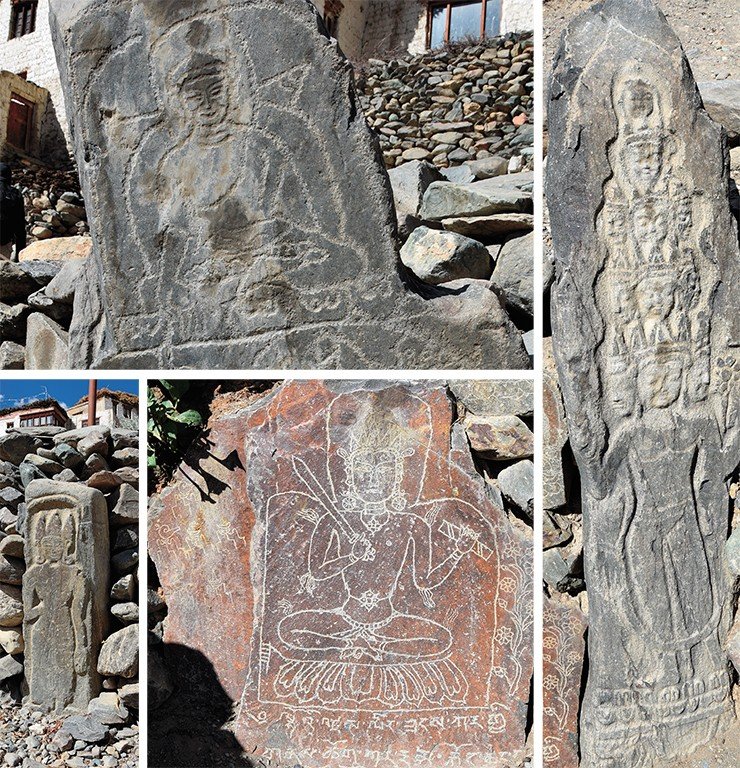
These actions are dangerous for those who take them, which is why they should be preceded by an incense-offering atonement ritual (Tucci, 1988). However, it works only for Tibetans: archaeologists have much greater difficulties with getting permission for earthworks from local deities. George Nicolas de Roerich (Yuri Rerikh) (1925) wrote that when he tried to dig the stone slabs at a megalithic complex discovered by their expedition in Lapchung (North Tibet), his actions attracted the attention of local nomads who were concerned that they would disturb the gods of the earth. As a result, he had to stop the excavations (1999).
When we first came to Zanskar, we did not start our works at once, but first set ourselves to visit some of the sites already known and mentioned in the literature***. Thus, a French traveler and writer Michel Peissel, who visited Zanskar in 1976, mentioned four vertical narrow stones decorated with relief images of Buddhist gods in the stone wall at the foot of the first houses in the village of Konchet, which is located on a cliff near Padum, the capital of Zanskar. We found this place, but there was only one stone left in that wall; the stone was decorated with an image of a deity wearing a trident crown. We found two other stones that matched the description at the center of the village on a small area between houses, almost on a sheer mountainside. They were dug into the ground together with two small plates with images of Manjushri and Tara, forming a semicircle.
Taken together, these stones with images of Buddhist deities formed a sacred place for the villagers. However, one of the heavy plates was about to fall, and the locals were very eager to restore the sanctuary in its previous form. We offered our help in the hope not only to fix the sculptures but also carefully examine each image from all sides. Although the locals welcomed our proposal, but the works never took off. The arrival of the Lama who was to perform an opening ceremony was postponed day after day; eventually, it became clear that this was a polite refusal.
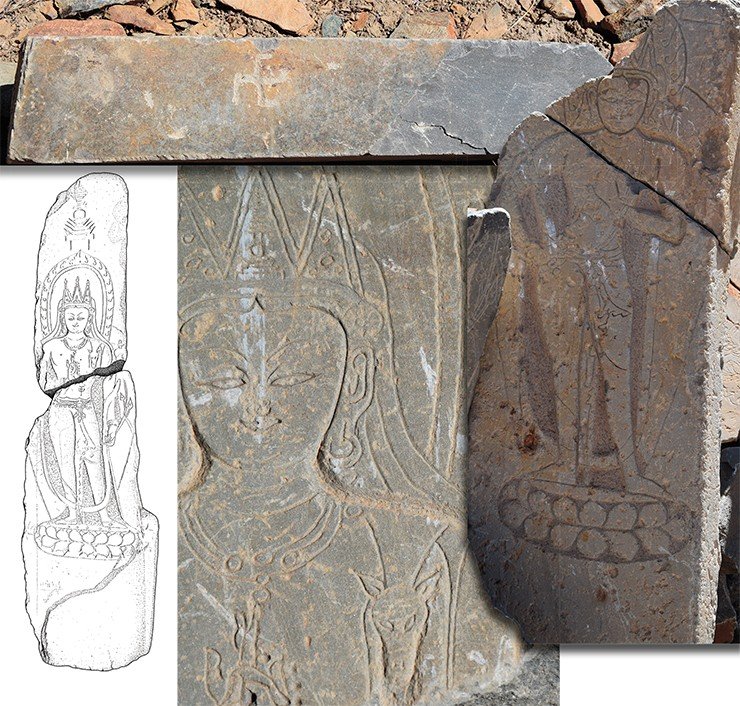
However, we soon had an opportunity to explore a sanctuary composed of diverse Buddhist images dating back to different times. One of the residents of the Manda village showed us an abandoned and destroyed sanctuary located high up in the mountains, not far from the ruins of a monastery. Nobody had visited that place for a long time. Nonetheless, archaeological excavations were again out of the question. Still, we were able to search through broken stone steles with images of Buddhist deities. As a result, we found, apart from a plate with a Bon swastika, original petroglyphs depicting fights of two pairs of wild yaks, which were cut in on a narrow plate.
These petroglyphs are a completely new page in the ancient art of Ladakh. First, they are cut in on one of the faces of a plate long narrow rectangular plate that can moved, albeit with some difficulty, rather than on a rock or large boulder. Second, the scene itself, as well as the configuration and the animal images, has no counterparts in the local rock art. The fine and precise lines on the stone show realistic images of ferocious Tibetan yaks, who differ from their Mongolian relatives in that they have far less or absolutely no long hair on the back and upper body.
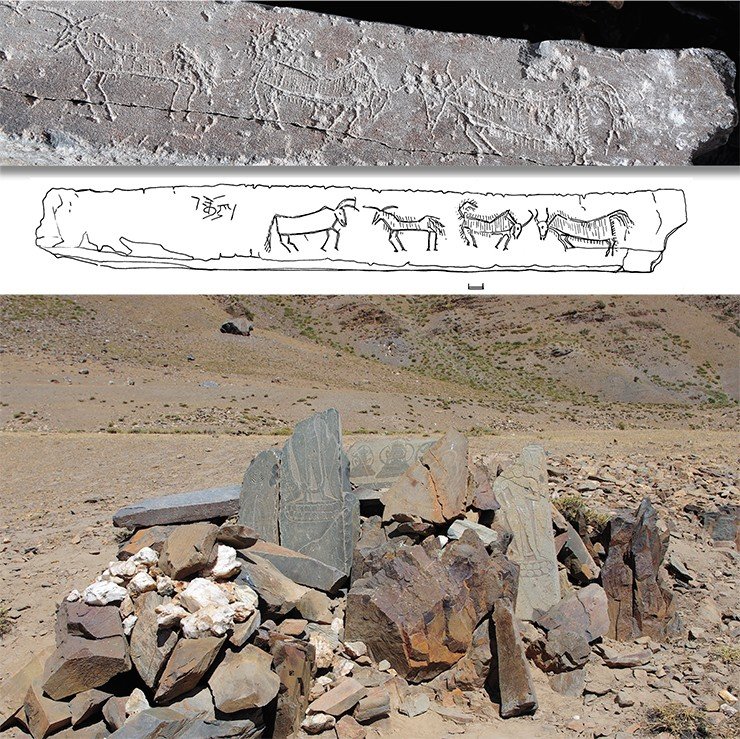
The scene seems to be a common portrayal of animal life. However, apart from an easy-to-read superficial meaning, such images always have another one, deeply hidden and not always intuitive. The scene would read differently if one looks at it through the prism of Tibetans' religious beliefs, where the yak holds an important place, comparable only to its role and value in the daily lives of Tibetans.
According to a local resident, the stone steles with images of Buddhist gods were broken by avalanches. It is hard to tell whether that was true, but we did our best to restore the sanctuary as fully as possible. Our works at this monument helped us understand that these shrines had developed gradually. Therefore, Buddhist images could come together with Bon symbols and ancient drawings. Excavations around these places may provide important materials, more ancient than those found on the surface.
Some of the most fascinating imaged stones would have never caught our view, had it not been for the help of local residents. For instance, they showed us on harvested fields near the village of Karsh, not far from the Karsh Monastery, opposite of Padum, three stones with stupa images. A stupa is a memorial monument and a highly important Buddhist symbol. Depicting stupas was considered a good deed, a gift and a redemption. There are hundreds of stupa images on rocks and stones along trade routes, in particular, in the Indus Valley. They served as road signs and as protection for travelers.
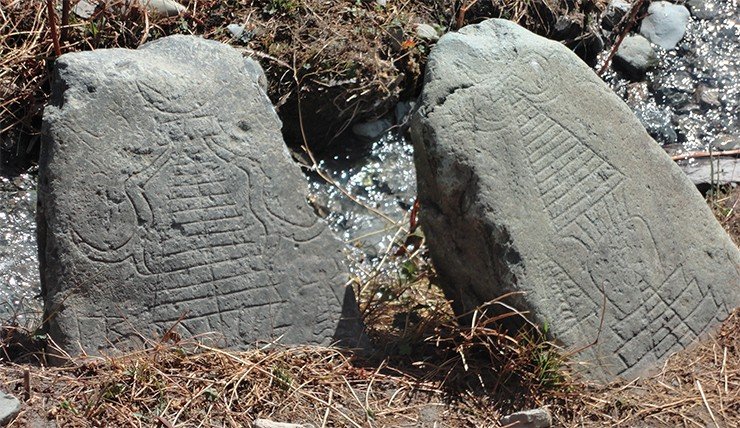
The stupa image stones discovered near the Karsh village are half in the ground. One has to dig them out to be able to restore the original images. But this is currently not possible. Although they are now building a highway through Zanskar, with digger trucks crushing everything on their way, the sanctity of the fields and pastures with their scattered evidence of ancient beliefs and culture is still intact.
Vanishing beauty
Although the main goal of the expedition was the search for pre-Buddhist monuments in Zanskar, Buddhist ones also captured our interest and attention. Zanskar is one of the few places in Tibet where there are preserved original frescoes of the 11th century, although they are disappearing before our eyes...
It is not only time that destroys ancient frescoes, which fade and crumble from the walls of monastery halls and chortens. They are often destroyed intentionally because the restoration or renovation of decaying chortens and the renewal of paintings in temples or in sacred images are among those pious deeds that best protect against the evil effects of the Dons. In Tibetans' religion, the Dons are spirits that send illnesses, including mental ones, that completely subdue the ill person. For example, it is believed that the Tibetan emperor Langdarma became an apostate and began to persecute Buddhism because a Don subdued the emperor to itself and deprived him of the sense of responsibility (Tucci, 1988).
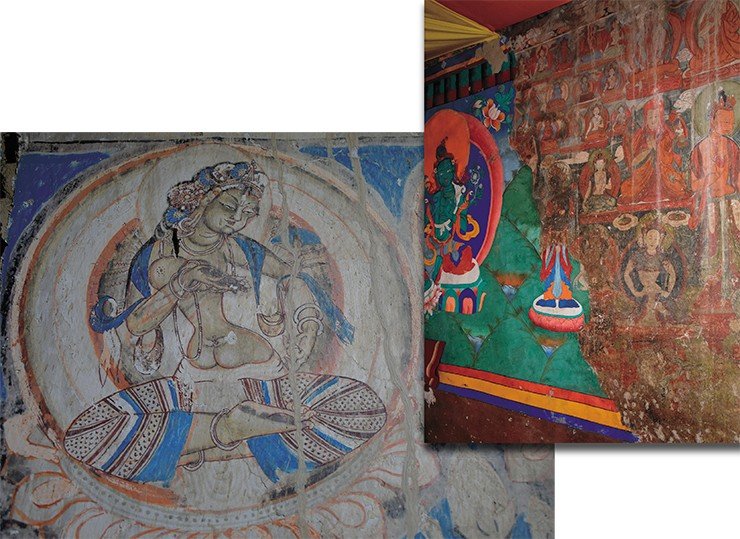
When local artists renew the frescoes in monastery halls, they do not think, of course, that those fading and crumbling paintings have a great artistic value. We witnessed them “redecorating” the prayer hall in the Karsh Monastery, which is located high up a cliff above the village of the same name. Half of the walls had already been covered with fresh frescoes. It was clear from the preserved old frescoes that they had nothing in common with the new paintings—neither in color nor in images.
The old paintings are not only works of art; they are an important historical source. They contain a huge amount of unique information about historical events, about those who ordered and paid for the art work, and about material culture such as clothes, textiles, architecture, etc. Protecting this vanishing world, if not in reality, then at least in videos and descriptions, in photos and drawings, in books and articles, is a major task that cannot wait any longer.
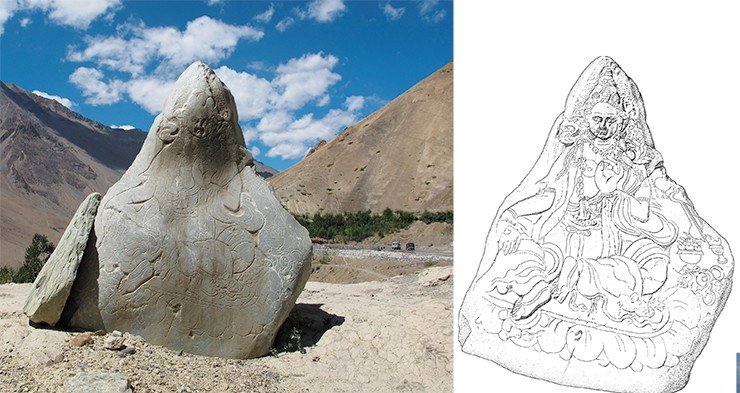
The Buddhist past and present of Zanskar is to be seen everywhere. However, ancient Buddhist images are often reinterpreted in the context of local people's views, endowed with other properties and names and, hence, worshiped for other reasons. The Changut Choeling female monastery in Zangla is about 500 years old. But the very place where the monastery stands was used by monks long before it was built: there are many caves in the neighborhood that were used for seclusion and meditation.
Our attention was drawn to a sculpture standing next to the old crumbling stupas towering on the mountain slope opposite of the monastery. It was an image of the most important and revered Buddhist goddess Tara, known for compassion. The image was carved in accordance with the canon on a big smooth boulder of a bluish color. Subsequently, the image was “upgraded” by deepening the facial lines, which did not make it look better. The local people have a legend that a shepherd was once transformed into this solitary stone, but what for and how—they have forgotten...
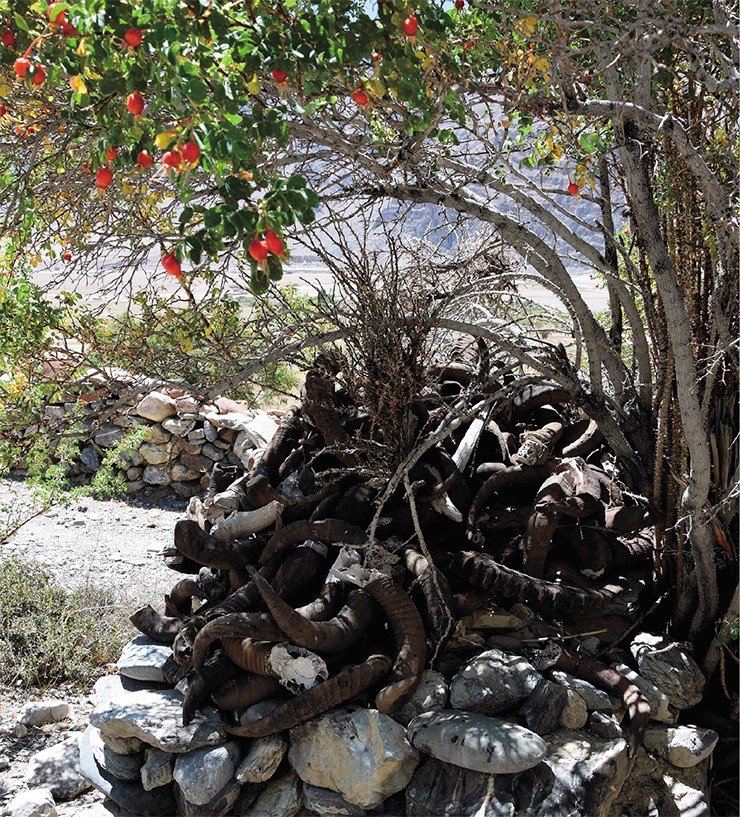
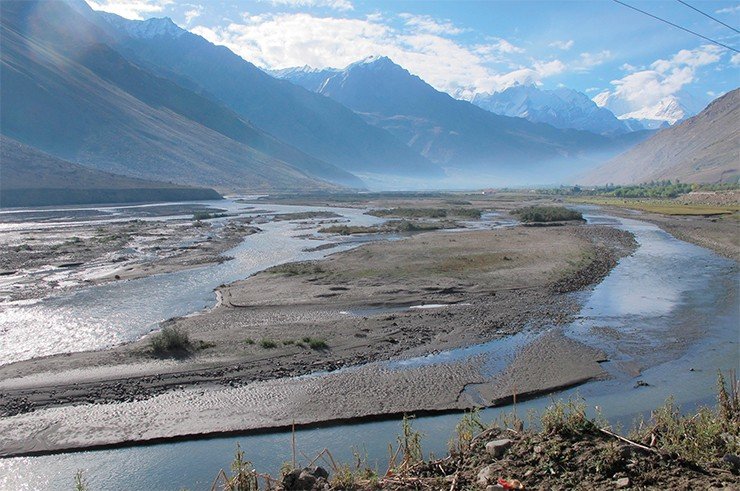
Now the stone is apparently used in some shepherd cults, as evidenced by offerings—huge piles of horns of domestic and, in part, wild animals at the foot of the hill on which it stands. According to a Bon monk, horns on stupas, homes and monasteries are outward signs of the ancient Bon religion. This connection dates back to the pre-Buddhist period in the Tibetan history, when Tibetan princes, the guards of the Doctrine of Bon, wore horn-decorated headdresses. The horns were made of different materials—gold, iron, corals, turquoise, etc.—and indicated the prince's status (Tucci, 1988). Now horns of domestic animals, mostly goats, often together with the skull, are placed on window sills and in the niches of people's homes or are suspended in Buddhist temples. Or, as in our case, these offerings make a sanctuary.
Right near the shepherd stone, we found a small clay vessel 7.3 cm in height (we could see only a tiny piece of its rim from beneath the ground). The vessel was filled with clay. The following items were found on its bottom: a square metal plate with traces of lost stone inserts, one insert made of turquoise, a transparent cylindrical bead made of rock crystal, and remains of two bone artifacts with bored holes, which possibly served as dividers in prayer beads. The vessel might have been filled originally with some sort of meat food because it contained plenty of fly puparia (larval skins).
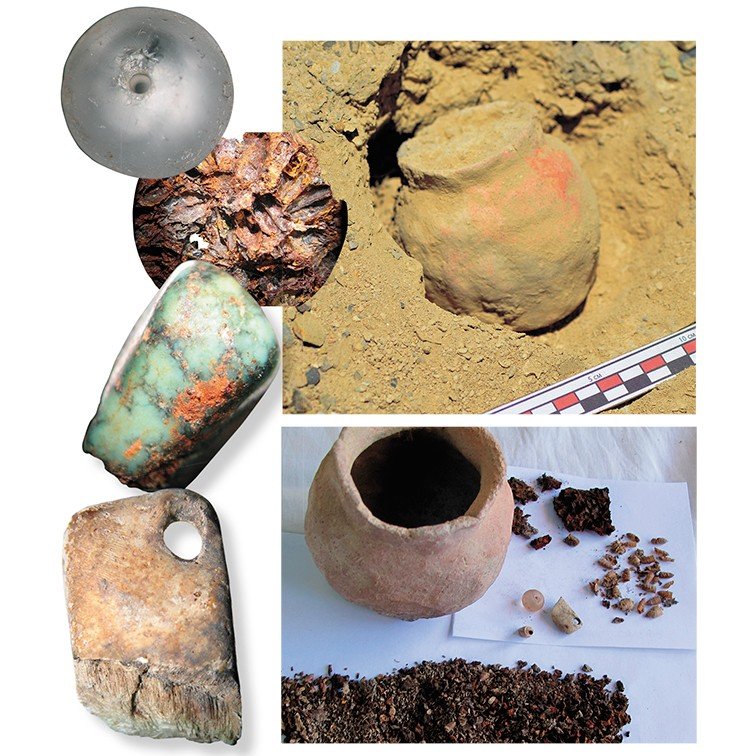
Obviously, the vessel and its contents was an offering to the deity embodied in the stone. We believe that there are many more of hidden sacred gifts in the earth around the stone.
Instead of conclusions...
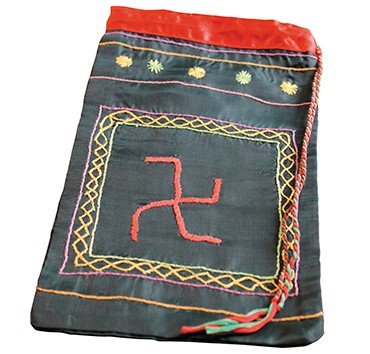 Amazing things happen. For instance, it turned out that the culture of the Teles, one of the Turkic-speaking groups within the Altai people, has a left-hand swastika. It is the tamga of the Almat clan. Why is it so? Neither ethnographers nor the culture bearers themselves, who still use this symbol, know the answer to this question.
Amazing things happen. For instance, it turned out that the culture of the Teles, one of the Turkic-speaking groups within the Altai people, has a left-hand swastika. It is the tamga of the Almat clan. Why is it so? Neither ethnographers nor the culture bearers themselves, who still use this symbol, know the answer to this question.
The origin of the clan is highly symbolic: an ancestor of the Teles tribe was married to a mythical creature, the so-called Almyska. This union produced a boy named Almat, who became the progenitor of the clan. Almyska, the mythical female ancestor of the Almat clan is one of the creatures (Almyses) living in the mounds. According to the legend, these creatures come out of the mounds in the twilight time and take the form of goats. If you destroy the mound, the Almyses will transform into war spirits causing bloodsheds and disasters (this information is courtesy of Dr. Sci. (History) E. Yamaeva). In the 1990s, the people's assembly of the Kulada village banned archaeological excavations of the largest stone mounds of the Pazyryk culture near this village in the Altygy-Soru Valley (the Ongudai district of the Altai Republic). The reasons for the ban included the reluctance to disturb the ancestors' peace and the fear of the consequences of excavations at these monuments.
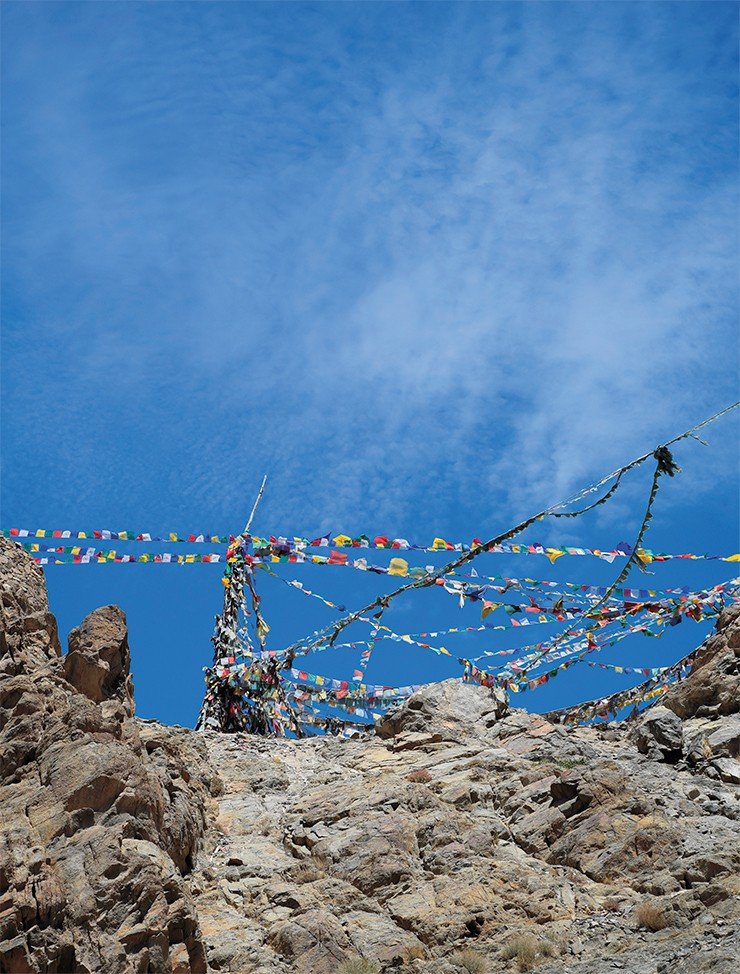
The surprisingly similar ancient ideas, as well as the left-hand swastika symbols of the two ancient cultures, create a link extending over millennia between the Altai and the Himalayas. The reasons for this connection are long forgotten, but archeology can find answers to many questions.
* There has been very productive archaeological research in Ladakh by organizations with international research teams: The Namgyal Institute for Research on Ladakhi Art and Culture (NIRLAC) and la Mission Archéologique Franco-Indienne au Ladakh
** From Svyashchennye znaki (Sacred Signs) by Nicholas Roerich; translated by Victoria Klimentieva
https://repositories.lib.utexas.edu/bitstream/handle/2152/ETD-UT-2009-08-358/KLIMENTIEVA-THESIS.pdf
*** Our expedition explored a large area in Zanskar with a great many wonderful ancient monuments. In this article, I mention only a few episodes to give a clue about the diversity of archaeological treasures of Zanskar
References
Kuznetsov B.I. Drevnii Iran i Tibet. Istoriya religii bon (Ancient Iran and Tibet. History of the Bon Religion). St. Petersburg: Evraziya, 1998 [in Russian].
Polosmak N.V. Steregushchie zoloto grify (The Griffons Guarding the Gold). Novosibirsk: Nauka, 1994 [in Russian].
Rerikh Yu.N. Tibet i Tsentral'naya Aziya: stat'i, lektsii, perevody (Tibet and Central Asia: Articles, Lectures and Translations). Samara: Agni, 1999, pp. 255–288 [in Russian].
Tucci G. The Religions of Tibet. University of California Press, 1988.
Francfort H. P., Klodzinski D., Mascile J. Petroglyphes Archaiques du Ladakh et du Zaskar // Arts Asiatiques. P. 1990. V. XLV. P. 5–28.
Pilipenko A. S., Romaschenko A. G., Molodin V. I., et al. Mitochondrial DNA studies of the Pazyryk people (4th to 3rd centuries BC) from northwestern Mongolia // Archaeol. Anthropol. Sci. 2010. V. 2. N. 4. P. 231—236.
The studies were conducted as part of a joint Russian–Indian project supported by the Gerda Henkel Foundation and were a continuation of the works started in 2015 in Kashmir
Translated by Alla Kobkova


